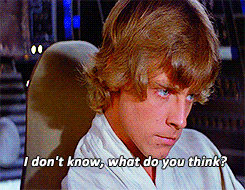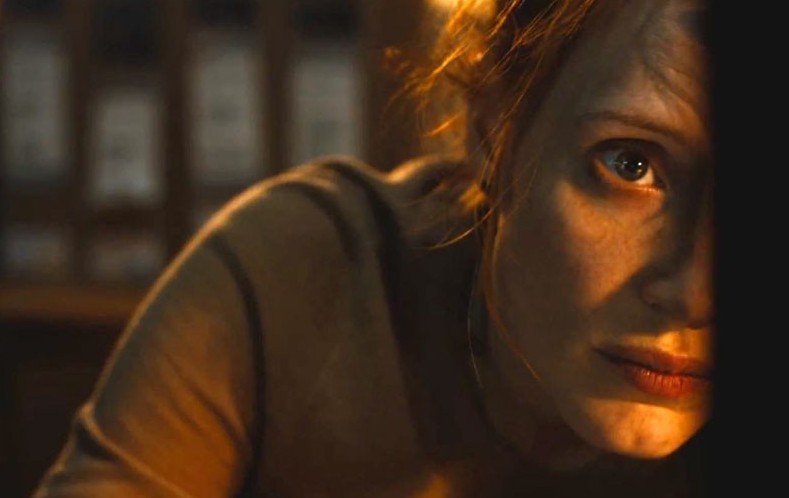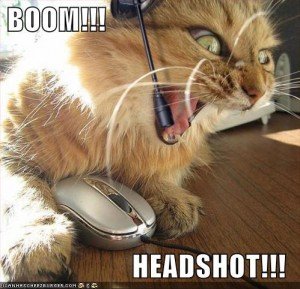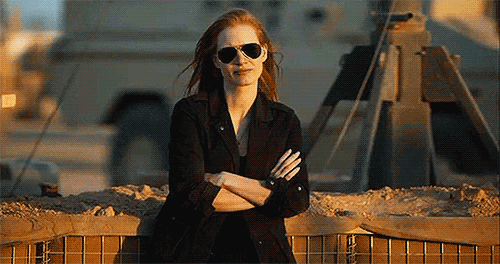So here is why J.J. Abrams might well be the best thing for the Star Wars franchise we all know and love.....And it’s those same things that make him the worst person for the Star Wars franchise we all know and love.

Let’s make things clear: when the term “Star Wars we all know and love” pops up, it strikes the heartstrings of many different groups of audiences.
There are those that have only seen the original three (Episodes IV, V, and VI); the new trilogy (Episodes I, II, and II); all six; and others who have seen none, instead growing up on the new series of television shows produced on cable television (Star Wars: The Clone Wars). And all have opinions about which iterations are acceptable, which adhere to the legacy, and what combination of the whole slew qualifies as“Star Wars.”
That is an exasperating list of individuals who claim the title “Star Wars Fan,” to all of whom it means radically different things. And that isn’t even including the consumer that is inundated with the dozens, if not hundreds, of Star Wars related video games or other visceral, graphic media with the Lucas seal of approval.
Then who exactly is J.J. Abrams talking about when he says “I want to do the fans proud” ?
The above J.J. quote was snatched from AP Movie Critic Christy Lemire, who humbly titled her article “J.J. Abrams good fit for ‘Star Wars.’” Her rhetoric, summed up quickly, is that Abrams’ “sci-fi bona fides were already beyond reproach, and he solidified them with his reimagining of the 'Star Trek' franchise in 2009.” She also references his indulgent homage to Steven Spielberg “Super 8,” as “full of childhood innocence and excitement of storytelling.”
What worked for Abrams’ ‘Star Trek’ was its nod to the older series while intentionally (forcingly, really) altering the timeline in order for the series to start-up again. It satisfied audiences that were familiar to the series, without creating a new television show, and introduced the series to a new audience. Kirk was young, lively, and sexually charged (played by the hot-it thing Chris Pine, in the midst of building a big-name reputation). Abram’s almost infamous lens flare worked as a harkening to the space opera epics the original franchise had both spawned and spawned out of. The reverence paid to the old-school vibe was returned two-fold by viewers.
But then it was the same thing that kept it from being a great movie. In trying to become its own film, ST, made a valiant effort of sheddings the reigns of the past with a fresh new cast, iconic in their own right (‘Heroes’’ Zachary Quinto, ‘Avatar’’s Zoe Saldana, ‘Shawn of the Dead’’s Simon Pegg, and John Cho of ‘Harold and Kumar’ fame) but floundered by plopping Leonard Nimoy in half-way through for a wonky-time-space plot shift that allowed everything to be back to abnormal. Not that Mr. Nimoy is a bad actor, and acknowledging the fact that the multiplicitous focus of the film is about Kirk “living up to his father’s legacy,” but it seemed like the cast was robbed of their independence in favor of recognizing die-hards and satisfying commercial ties.
Back to Star Wars. Imagine if Abrams dragged some old footage of Alec Guinness to create a hologram showed up halfway through Episode VII, after a whole new set of characters needs to be established to found a new trilogy, and gives Luke’s son (or whoever has been effectively built up in their own right) a big ole plot device that more or less says “hey, you can never live up to me.”
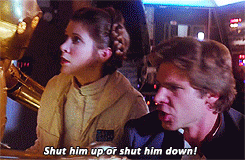
Right?
While that is probably taking a step too far, it would be absurd if the films were chained to their predecessors. It ends up in the same trap that what made I, II, and III hollow (to make my opinion’s clear) the fact that they were destined to end with IV. There was limited space to create a new trilogy with a legacy looming in front of it.
This isn’t even acknowledging the problem with the conglomerate fanbase.
Or more importantly, the demographic of that fan-base.
Star Wars has evolved passed the heyday of Spielberg and Lucas’ classic films. It isn’t a commercial cow to be milked up to fill the bucket up with cash, if I may be so bold to say, but a full-blown media hub in its own right. It reaches out to groups besides old-school purists and children eager to gobble up space toys.
Mary Hamilton’s well-thought article “Star Wars: The Old Republic, the gay planet and the problem of the straight male gaze” posted in The Guardian focuses on a the issue of how same-sex relationships were ‘tacked-on’ in a high-profile, Star Wars Massively Multiplayer Game (MMO). In the most basic of descriptions, it describes how the developers of the game assumed the sexual orientation of their audience, assumed the anything of their audience, and tried to fix it later in the game by providing premium content for pay-to-play gamers. Some said that it was treating gays with irrelevance. Other gamers even went so far as to say the developers had “ruined Star Wars” by adding the same-sex content.
What all this exposition is trying to achieve is that the times have changed since the 70’s and 80’s when Lucas peered back to a galaxy far, far, away and provided a generation with a host of new imaginative inspirations, technologically and culturally. One of the earliest things that comes back to mind in ‘Star Trek’ is how Kirk bombastically flirts with every women he sees, be they alien or whathaveyou. He ogles them, be they green, black, or white. Abrams’ “Super 8” plodded along traditional lines by having the boys fight over the affection of one girl, who ended up pairing up with one of them.
This isn’t to say Abrams is ignorant to the times, or these demographics ,but he certainly isn’t paying much screen time to them.
Star Wars is a cultural phenomena that has reached multiple generation of people. Of races. Of sexualaties. And while Abrams can bring the ‘Old-School,’ or ‘Golden-Age’ sci-fi feel back into our hearts--bring back the Star Wars as we know and love-- he hasn’t shown much ability, or desire rather, to do much more than that.
Abrams doesn’t look like the guy who is going to bring Star Wars--the mythos, the culture, the possibility-- to the 21st century.
